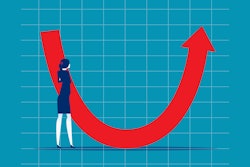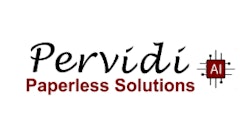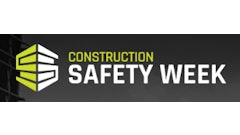
You have heard me say “CASH IS KING” probably 50 times if you have been reading my columns for any length of time. And that statement is true even more so during these confusing times. A simple example we can use spelling out how cash is generated follows:
- Bill for your products and services.
- Collect your billing dollars outstanding.
- Pay for your materials and services related to job costs including payroll costs.
- Pay internal payroll.
- Pay occupancy costs.
- Pay operating costs.
- Pay interest cost.
- Pay note payments due.
- Pay any taxes due.
- Last but not least, PAY YOURSELF.
Notice you get paid last, after other operating expenses, debt service and taxes are paid. Your normal payroll is covered but anything more than that has to be determined based on company needs going forward.
Put all the steps on the list above together for a day, a week or a month and you are on your way to better understand your cash position. We will then start with your opening cash balance, add the cash receipts, subtract cash disbursements and wind up with your ending cash balance. Hopefully, this ending balance plus your anticipated receipts and disbursements for the next period allow you to duplicate this process for the entire year and wind up with a reasonable balance on Dec. 31 for the year in question.
Sounds simple. Make your deposits and pay the bills and you wind up with a reasonable cash balance to work with.
Not so fast, ladies and gentleman. That only works if your receipts exceed disbursements or where disbursements exceed receipts, but not to the point where you eat into your opening balance to any great extent.
I think we can all agree that it would be prudent to have the ability to project you cash balance on a weekly basis. To do this, management needs a tool to assist with this process. The tool should contain weekly data regarding estimated cash receipts, any payroll that falls into that week, a list of fixed monthly payments, including monthly debt service and any other significant payments that need to be paid in the week. Using this tool allows you to stay ahead of the game should you start running short of cash.
If at all possible, you want to avoid cash shortages because doing so leads to nothing but additional problems you really do not have time for. I guess you could approach your bank for an increased line of credit. You could stretch out vendor payments. You can cut costs and you can find other ways to increase cash flow to make up for the shortfall. I might adopt all of these ideas, but spend most of my time trying to find ways to increase cash flow that cost me nothing, except for the time it takes to implement changes to my daily processing that will increase my cash balance, hopefully to the extent where I make up that shortfall that developed.
Let Us Discuss RECEIPTS
Many short-term assets on our balance sheet get converted to cash. How long that takes is the issue. Accounts receivable, notes receivable, work-in-process (WIP) and any hard assets sales all convert to cash receipts. We start with the WIP, which has to be converted to an invoice as soon as possible. And I mean ASAP! The cost accounting needs to be current. All waivers received and reviewed against invoices being billed. Any cost or billing issues resolved before the invoice is prepared or removed from the current invoice if finalizing open items will take too long to resolve. The invoice has to be problem free with all required back-up so that you can get an anticipated payment date. Every day you gain converting WIP to cash makes a big difference. And when you get a check, it MUST be deposited that day. It does you no good to speed up the billing by a week if you let the check sit on your desk for three days.
Other assets you can covert to cash would consist of parts and equipment no longer needed. If you do not use the equipment any longer nor have a need for parts sitting in part bins, get rid of them and covert those assets to cash. No matter what you get for them, it is a plus if the equipment or parts in question are otherwise just taking up space. If you have enough old stuff to sell, you may be able to reduce your line of credit with sales proceeds and lower your interest cost in the process.
There are many other areas we can explore to improve your cash position. Most center around your disbursements. We will do that next month and maybe even a third month to tie up all the loose ends.
HOMEWORK FOR YOU
- Cash needs to be on a worksheet by week including dates when payments due.
- Cash needs to be prioritized so you make the right payments at the right time.
- Review the billing process to see if you can speed up invoices by a week or two.
- Be told what checks or payments came in that day and whether they have been deposited.
- Actively chase your money.
- Immediately resolve any billing issues.
- Track days it takes to collect ( 30-40 day range)
- Calculate days sales outstanding and review monthly.
- Assign responsibility for these tasks.
Remember, CASH IS KING, but more cash is better.



















